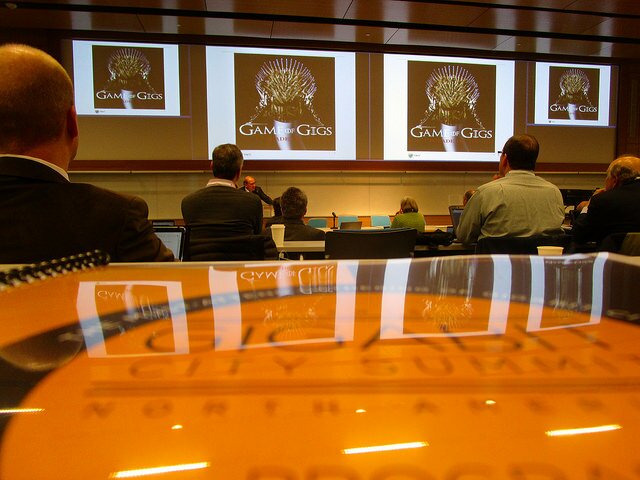Foodborne Chicago is a website that connects people who complain about food poisoning on Twitter to the people who can help them out— the Chicago Department of Public Health. This Smart Chicago Collaborative Project recently had it’s one year anniversary and has responded to over 300 food illness tweets and has initiated over 60 different restaurant inspections in the City of Chicago.

An early schematic of Foodborne Chicago
To learn more about how the site works, we sat down with Joe Olson to talk about how they’re using machine learning and APIs to help the health department combat foodborne illness.
To start with, Foodborne Chicago uses Twitter’s public API to gather all the tweets that were generated in Chicago. The app then uses machine learning and the R statistical programming language to narrow down a daily average of 90,000 tweets to about five tweets that may relate to foodborne illness. The computer power to do this is surprisingly affordable. Foodborne uses elastic computing from Amazon’s EC2 service and only costs pennies a day to process the tweets in almost real time.
Once they identify a tweet that relates to a possible case of foodborne illness, the app flags the tweet. The Chicago Department of Public Health then sends a response back to the user asking for more information.
 The link brings the user to a web form that asks for more information about the incident. That information is then sent to the City of Chicago’s Open311 system. The 311 system is how the city manages services requests, including reports of foodborne illness. Based on the information, the city will send out an inspector to make sure the suspect restaurant is following all the health safety guidelines. The user is also given a tracking number so they can follow the issue on the city’s service tracker as it progresses.
The link brings the user to a web form that asks for more information about the incident. That information is then sent to the City of Chicago’s Open311 system. The 311 system is how the city manages services requests, including reports of foodborne illness. Based on the information, the city will send out an inspector to make sure the suspect restaurant is following all the health safety guidelines. The user is also given a tracking number so they can follow the issue on the city’s service tracker as it progresses.
Foodborne Chicago recently received a grant from the Knight Foundation in order to expand the project and do research to better understand how to get a better response rate from residence. As part of this research, the app recently went through Smart Chicago’s Civic User Testing program. Since that time, Foodborne has tweaked some of the responses to reference the Chicago Department of Public Health’s role in the program as well as use Twitter Cards to get more information to the user quickly.
Because the app uses existing APIs such as Twitter and Open311, the system is re-deployable to any system that has an Open311 system and a health department that wants to harness the power of social media.
To find out more information about Foodborne, you can visit the website at foodborne.smartchicagoapps.org. If you’d like to bring Foodborne to your city, feel free to reach out to us below!





